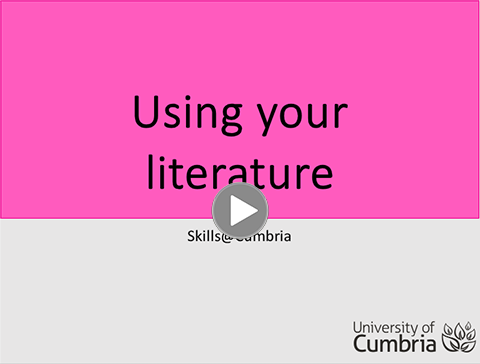Format
University guidance on font and size of text, together with other assignment submission information, can be found on the
Assignments page.
Using more formal and considered language
Academic writing is all about accuracy, and your choice of words should be made carefully. Always avoid using informal words and colloquial expressions, as these don’t look very professional. For example, try not to include contractions (can’t, isn’t) in your writing - simply write these out in full (cannot, is not).
If you use any abbreviations, for example: OT, NC, make sure you have explained them in full first as well as showing your reader the abbreviation you will use: Occupational Therapy (OT), National Curriculum (NC). From then on you can just use the abbreviation.
If you are studying on a course in the sciences, you will be expected to adopt a scientific writing style.
Language Tutorials
The tutorials linked below offer guidance and advice about using more concise, precise and measured language.
Developing an Academic Style (video)
Honing Your Academic Style (video)
Using Concise Language (interactive presentation)
Using Precise Language (interactive presentation)
Using Measured, Cautious and Tentative Language (interactive presentation)
The use of the first person (I/we)
Traditionally, academic writing has tended to avoid the use of the first person. Generally speaking, students are often directed to avoid making statements such as: "Based upon the literature I have read, I think that…" Instead, students across many disciplines are encouraged to make it clear in their writing that they are being objective rather than opinionated by making statements such as: "Based upon the literature, it could be argued that…" This academic style of writing shows the student is not presenting their own opinions but rather providing readers with an argument that has been formed from the research and evidence in the literature they have read. For more examples of academic phrases that help to achieve this academic style of writing, take a look at: www.phrasebank.manchester.ac.uk.
However, there may be assignments and disciplines where the first person is more commonly used. For example, reflective practice assignments may well require students to write in a mixture of first and third person. Find out more about reflective writing.
Furthermore, in recognition of the changing nature of expectations from professional bodies and evidence based practice, academic writing practices are becoming more flexible in their approach. If you are unsure about what style of writing is expected of you in your subject area or for a specific assignment, check your assignment guidelines and talk with your tutors.
NB - unless you are writing instructions that directly address a specific audience, avoid using 2nd person (you/yours) in academic writing.




